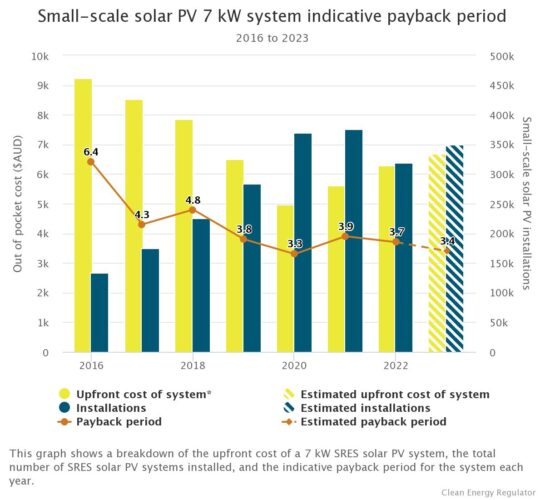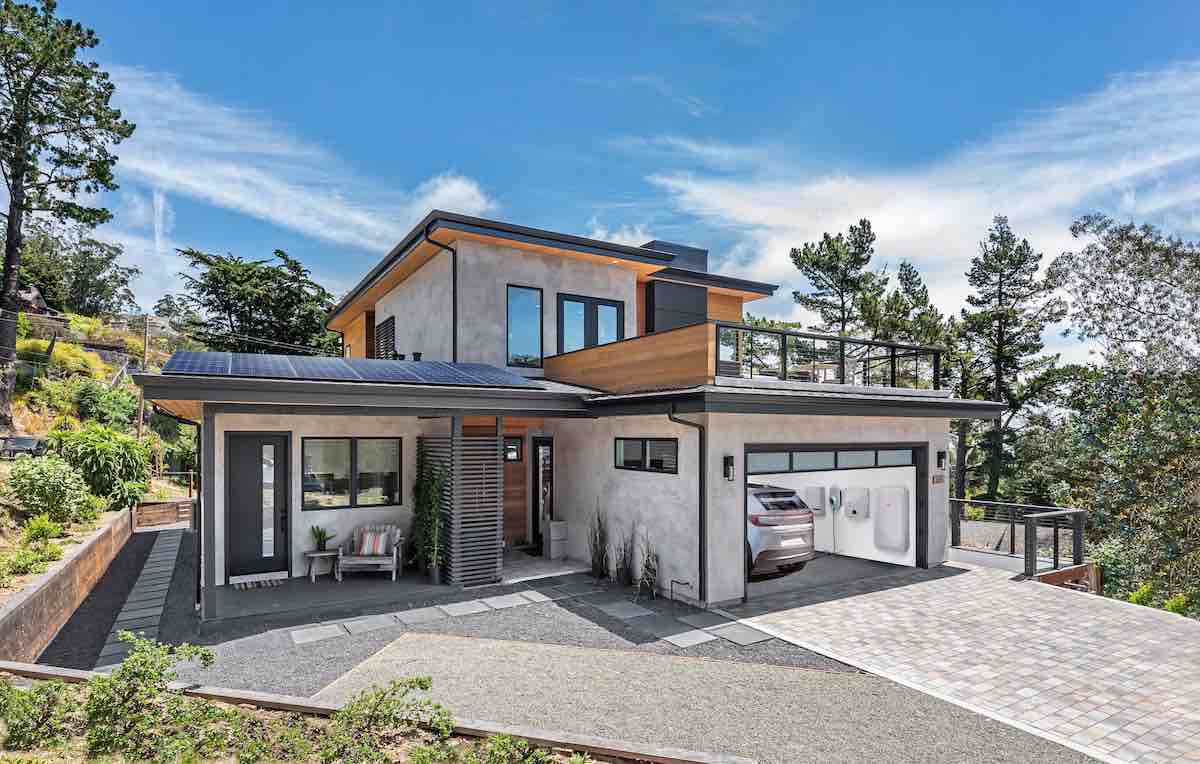
Rising power prices are bringing rooftop solar payback periods back down towards the record low seen in 2020, almost completely wiping out the impact of higher component costs.
New data from the Clean Energy Regulator (CER) shows payback periods are down to 3.4 years for a 7 kilowatt (kW) system, close to the all-time record made in 2020 of 3.3 years.
“From 2020, increasing component prices due to COVID-19 related shortages, combined with ongoing increases in average system size, increased the upfront cost of solar PV systems,” the regulator says in its latest quarterly report.
“In mid-2022 increasing energy prices started bringing payback periods down again. For 2023, increasing energy prices may reduce payback periods to three to four years in some areas, despite STC [small scale technology certificate] reductions from the reduced deeming.”

As a result, the regulator expects PV installations and capacity may return to near record levels as energy bills continue to increase and payback periods fall.
“The CER expects at least 3 GW [gigawatts] of small-scale solar PV to be installed in 2023. If the H2 2022 trend continues, total added capacity for 2023 could reach or exceed the 3.2 GW record seen in 2021,” it said.
In 2022, small scale solar installations hit 2.8 GW, including mainly residential rooftop and a small amount of industrial, with much of it coming in the second half of the year. Average system sizes are also heading upwards, touching 9.7 kW.
If last year was the third highest year for small scale solar installations, the boom-time was during the pandemic as Australians figured out what to do with travel and other discretionary savings fuelled installations during COVID-19.
That trend fell away as discretionary cash flooded back into the holidays and restaurants.
But the fourth quarter of calendar 2022 saw a bounce back in installations, due to commercial and industrial demand.
Feed-in tariffs as a contributor to payback periods are very much a thing of the past as rates plunge to mid-to-low single digits around the country — except in one part of Queensland.
The Queensland Competition Authority wants the solar feed-in tariff for customers on the regional Ergon electricity network to rise 40 per cent from 9.3c/kWh to 12.9c/kWh, to reflect the costs a regional Queensland retailer will avoid by sourcing electricity from solar customers, instead of buying it from the National Electricity Market (NEM).
Elsewhere in the NEM networks are closer to introducing individual ‘sun taxes’ on solar exports to the grid from July 2024, but the plans are still opaque even to RenewEconomy’s experienced journalists.
More people want batteries even if the cost doesn’t add up
Batteries are on the up in Australia as well, as 7 per cent of new solar is being installed with a battery at the same time in 2022.
In 2021, that figure was 3 per cent.
The CER says battery installations are voluntarily reported, so the numbers are an indication of growth rather than actual battery installations.
However, the cost equation still isn’t in favour of batteries. Payback periods are between six and 11 years, according to Solar Choice data, and demand is from Australians buying the energy insecurity story.
Indeed, while Tesla recently trumpeted its $1600 price cut on a 13.5 kWh Powerwall battery, it had also hiked that price by $4,530 between 2020 and the end of 2023.



